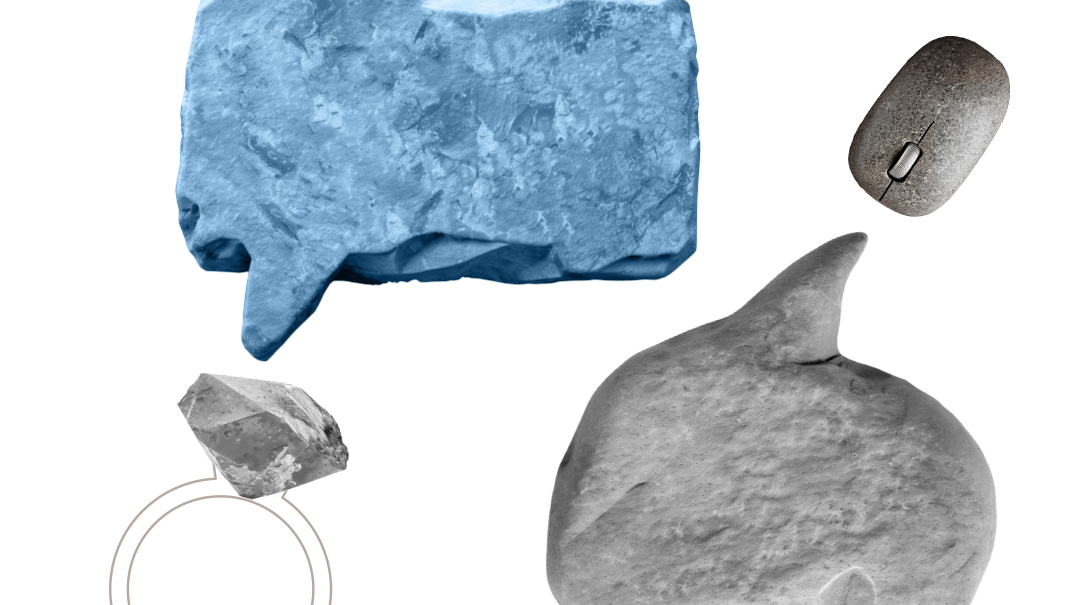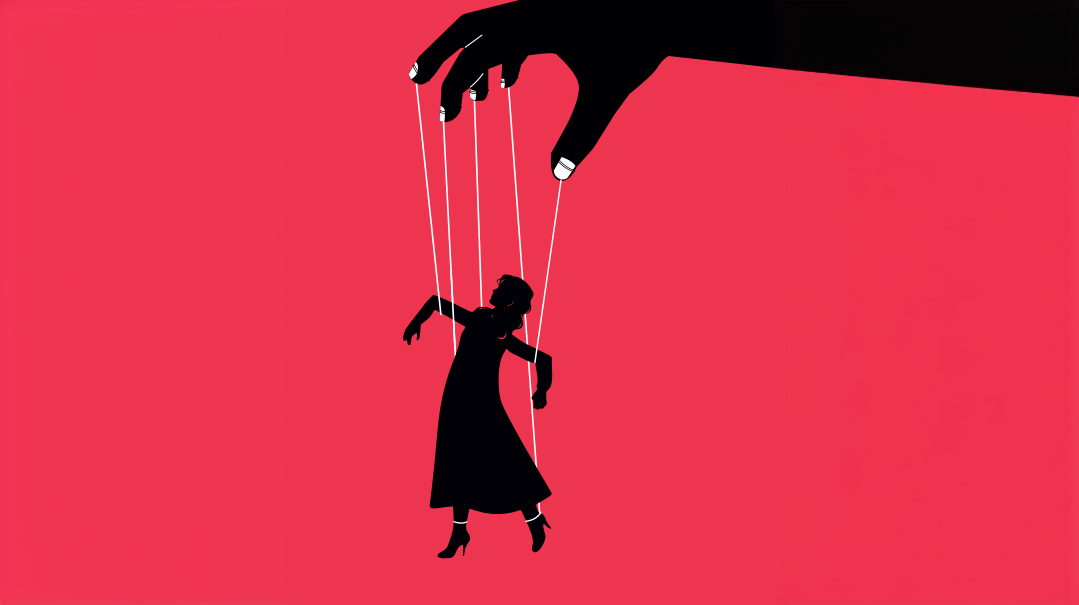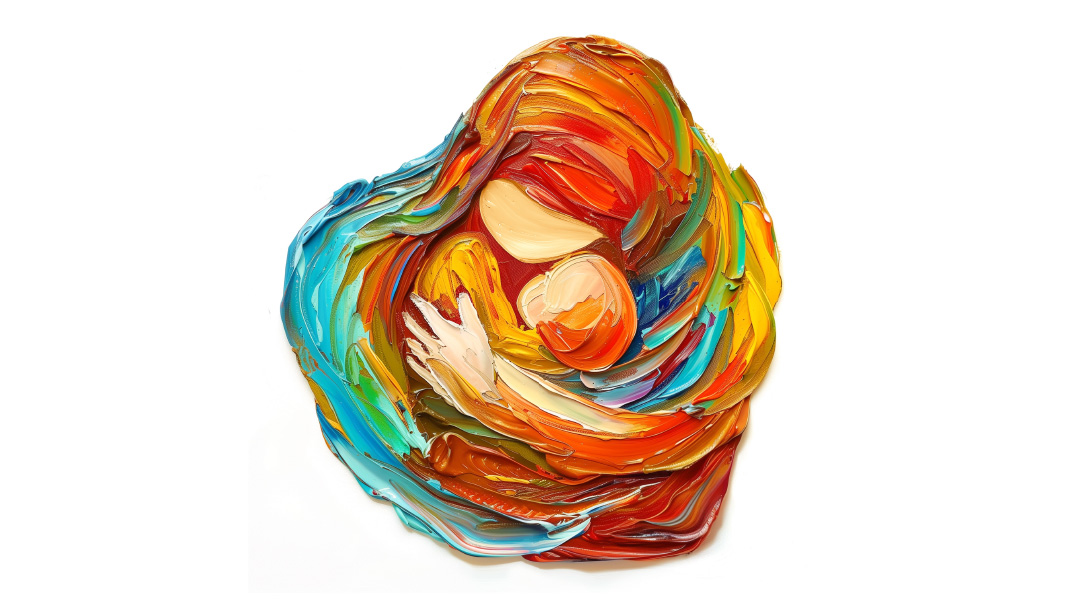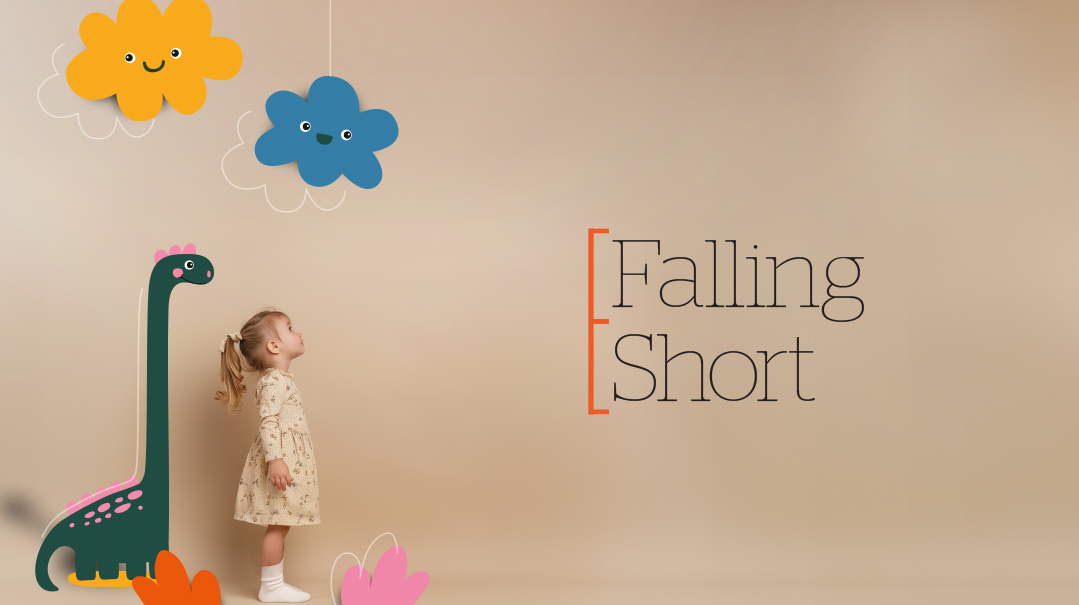One Final Havdalah


Rebbetzin Bruria David’s life embodied the Torah concepts of kavod and tzniyus, words that defy translation
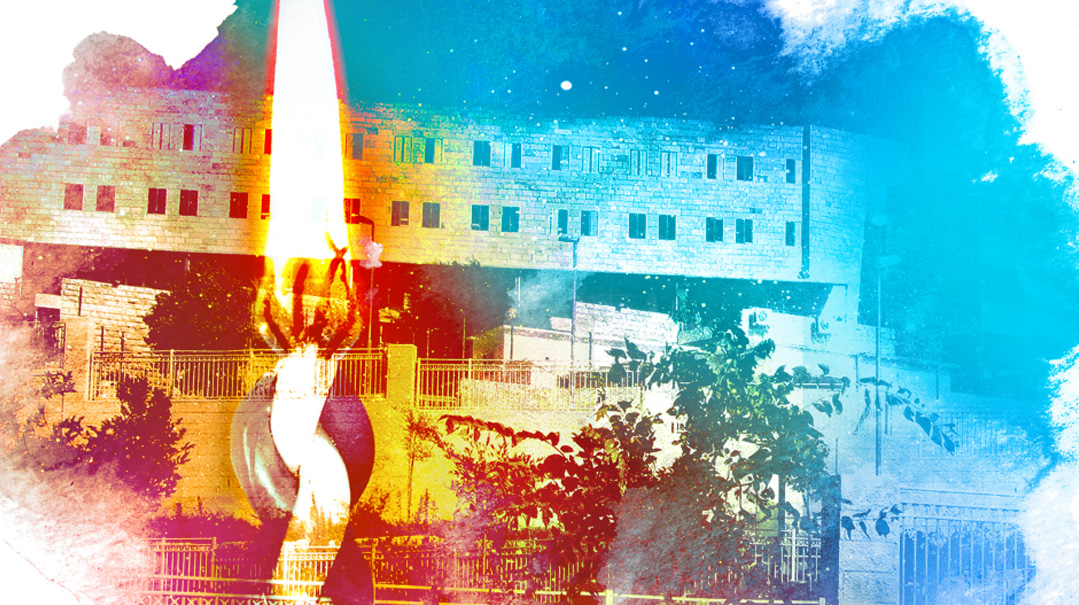
What is tzniyus? Is it modesty? Inwardness? Humility? It’s a word that has no sufficient English translation, and is made poorer by the attempt. Rebbetzin Bruria David’s life embodied the Torah concepts of kavod and tzniyus, words that defy translation.
When our editorial team put out a call for “short, powerful memories” following Rebbetzin David’s petirah last week, alumnae pointed out that Rebbetzin David always downplayed that which was flashy but fleeting; she taught, instead, that spiritual growth results from the steady accumulation and reiteration of basic fundamentals, rather than from the thrilling moments of inspiration. Sound bites, she taught us, reduce the great and the awe-inspiring to banal clichés.
A magazine whose craft relies on the anecdote and the pithy quote cannot, by its very nature, do justice to someone whose life was about the serious, the measured, the majestic.
And yet, at the behest of daas Torah, we could not send a magazine to print without marking, albeit in some small and inadequate way, the loss of the great mechaneches of our era. Her impact reached far beyond the thousands she taught directly, extending to her students’ children and grandchildren, their students and students’ students.
Students also reminded us that Rebbetzin David encouraged us to read biography. Despite emphasizing that the genre often contained errors, whether factual inaccuracies or subjective interpretations by the author, she felt there was much to gain by reading about great people. At the same time, she cautioned, one must read about gedolim with awe and humility, remaining cognizant that they were human and struggled, but on a far different plane than regular people.
And so, it is with trepidation and humble acknowledgment of the shortcomings of our medium that we endeavor to paint a small picture of the impact that Rebbetzin Bruria David wielded on the world of chinuch habanos.
The Rosh Yeshivah’s Derech
Rebbetzin David never spoke for the general public, and refused every offer or request to address chinuch panels or discussions — yet she impacted so many students who went on to become teachers of Torah. Her graduates became the mechanchos of the next generation. Seminary and high school principals and teachers in Eretz Yisrael and throughout the US would call her for guidance long after graduation and pattern their curricula and goals after her vision.
All of the chinuch Rebbetzin David imparted was deeply rooted in the mesorah she received from her father, Rav Yitzchok Hutner, whom she always referred to simply as the Rosh Yeshivah; Rebbetzin David was the only child of Rav Hutner and Rebbetzin Masha (Lipshitz). Anyone who knew her understood that her main identity was that of eishes chaver of Rav Yonoson David, rosh yeshivah of Pachad Yitzchok in Har Nof. Harking back to Slabodka’s ethos of gadlus ha’adam, her behavior embodied the dignity and gravitas of bygone days; every action was thought out and in accordance with the dictates of halachah and mussar. Students describe tremendous passion, but always under the rule of prodigious intellect.
“In every nuance, you learned hierarchy and appropriateness,” says Mrs. Zlata Press, principal of Prospect Park Yeshiva and a longtime student of Rebbetzin David. “She didn’t give speeches, she was it. She created for us and her talmidos a sense of hierarchy in all areas.”
That sense of hierarchy was inextricably bound up with kavod: the reverence due to that which has weight, substance, permanence. Above all, that kavod was due to Torah and those who learned it.
It was these attitudes and lessons that she would impart in the seminary she founded in the early 1970s, BJJ — officially titled Machon Sarah Schenirer, and known among insiders as “The Machon.” The five-story building on 38 Sorotzkin — once just the living quarters, later to serve as both dormitory and classrooms — is unassuming, nondescript; a squat, sprawling building clad in ageless Jerusalem stone. But its walls transformed thousands of lives.
BJJ is famous for its relatively short list of rules.
“She didn’t create rules, she set standards,” says Mrs. Pnina Alster, menaheles of Migdal Seminary in Lakewood. “And in her presence, you wanted to live up to those standards.”
Her educational standards were rigorous, because she believed in her students’ potential to meet them. The curriculum was challenging for virtually all the students — even those with strong backgrounds — and they spent hours over seforim in an attempt to gain both breadth and depth of knowledge. The point was not to create female talmidei chachamim, emphasizes Mrs. Alster, but that through learning and connecting to Torah, a person refines her daas and brings her avodas Hashem to ever-higher levels.
She didn’t hesitate to tell her students when they made mistakes, remembers Dr. Ruchama Fund, who was one of Rebbetzin David’s earliest students in Beth Jacob Hebrew Teachers’ College on the Lower East Side, as well as a mother and grandmother of BJJ talmidos. She saw the boundless potential in every person, and the concomitant responsibility to live up to it. If you were mistaken in thought or action, she wouldn’t flatter you with empty platitudes, Dr. Fund recalls; she believed in you more than you believed in yourself, and would spur you to accomplish what she knew you could.
Torah Itself
Students relate how Rebbetzin David would quote a maamar Chazal, Rashi, or Rishon with a somewhat puzzling phrase at the end — and then pause. Pen to paper, the girls would wait, expectantly, for her to elaborate. But she wouldn’t. Instead, she would react with disappointment, recalls Chavi (Gonsky) Faitler (5768/2007-08).
“ ‘How can you be just sitting in your seats?! You have no response to what I just said?’ ” How could you learn this piece of Torah and not react, she was asking. “She was much more than a teacher,” Chavi adds. “She molded my sense of self and my drive to think deeper.”
In Rebbetzin David’s class, students were taught not just how to think, but how to feel. “Understanding without feeling is not understanding,” one student remembers her saying. “And feeling without understanding is not feeling.”
For Rebbetzin David, every single word of Toras Chaim was laden with meaning and depth, and every word had great power. She deplored the immature tendency of many students to ask, “But what’s the l’maaseh we can take from that?” because, as she would remind them, “Attitudes are also l’maaseh.”
Having the correct understanding is, itself, intrinsically important, not only because of how it impacts our actions. Our daas is the definition of who we are, explains Mrs. Alster, so Rebbetzin David placed supreme importance on the refinement of that daas.
When Rebbetzin Tziporah Heller-Gottlieb founded her seminary, Bnos Avigayil, with Rabbi Dovid Kass, she consulted with Rebbetzin David about the goals of learning. Rebbetzin David first mentioned shemiras hamitzvos.
But then Rebbetzin Gottlieb asked, “What about less concrete mitzvos like ahavas Hashem, dveikus ba’Hashem, yiras Hashem? Ahavas v’dibbuk chaveirim?” And, as Rebbetzin Gottlieb recalls, “She mamash lit up.” Rebbetzin David shone with joy as she discussed these chovos halevavos and said that as you do the actual learning, you are awakened toward these goals.
“Learning itself was never anything more or less than avodas Hashem and a means toward serving Him,” says Rebbetzin Gottlieb.
Penetrating Distinctions
In the classroom, Rebbetzin David’s official subjects were Chumash and Historia of the yishuv ha’aretz, but the lessons ranged far beyond those topics.
One theme echoed by generations of students is the imperative to distinguish between kodesh and chol — a distinction that is often more difficult than it sounds.
“Im ein daas, havdalah minayin?” Rebbetzin David would ask frequently, paraphrasing the comment of Chazal. She expected her students to use their powers of discernment to strip away the superficial veneer of life and see things with a Torah-true lens.
“Rebbetzin David would elaborate that with daas we would learn not to be overly impressed by every nice idea or story we heard,” recalls Dr. Sarah Becker (5770/2009-10). “Rebbetzin David explained her goal was not to breed cynicism; instead, she would often tell us that our nos make our yeses a meaningful yes. Because if everything was ‘awesome,’ then was anything really worthy of awe? To appreciate value through distinction was the mark of a bar daas in Rebbetzin David’s book.”
“She had a level of trust: she believed that we could develop this critical thinking,” remembers Dr. Fund. “She had the ability to take an ordinary article in a newspaper and point out the hashkafah behind it.”
Yehudis (Kaplan) Margulies (5752/1991-92) recalls her impression of Rebbetzin David’s method of chinuch. “It wasn’t being ‘wowed’ with huge bursts of inspiration, but rather something much more subtle,” she says. “Almost like an IV drip, very slowly and gradually infusing us with extra layers of sensitivities that impacted our ruchniyus, drip by drip.”
Rebbetzin David would illustrate how subtle influences crept into thought patterns, from sources as innocuous as the spoken vernacular or advertising circulars.
From Rebbetzin David, Mrs. Press learned that a Jew doesn’t have a “weekend” — there’s Shabbos and then Sunday, two completely different and unrelated entities, existing on entirely different planes. Similarly, Mrs. Press recalls once mentioning a class she was teaching on the topic of “Maamarei Chazal u’nivim [quotes from Chazal and idioms].” Rebbetzin David was aghast; how could one lump divrei Elokim Chayim with figures of speech? She taught her students to distinguish between the State of Israel and Eretz Yisrael; between simply loving Jews and halachic ahavas Yisrael; between Shabbos lunch and the daytime seudah.
A student recalls how Rebbetzin David once spotted her preparing to leave class before the bell had rung. “Are you leaving already?” Rebbetzin David asked her.
“I hastily clarified that I was just putting my stuff away,” she recalls. “But with that smile and spark in her eye that spelled ‘teachable moment,’ Rebbetzin David turned to the rest of the class. ‘Anyone have any comment?’
“I was confused, not sure what I’d said wrong. Rebbetzin David paused for everyone’s attention, and then explained (with the weight of any other hashkafah point taught during the lesson), ‘Your Chumash and your Chumash notebook are not stuff.’
“Through hundreds of examples like this,” the student adds, “Rebbetzin David honed what she called our inner barometer — that nuanced sensitivity to what is aligned with Torah hashkafah and what isn’t. That inner barometer is a gift that accompanies me even as I am years removed from her classroom. It’s the filter through which I sift new information before accepting. It’s the laser beam that guides my small but important daily decisions.”
Mrs. Rachelle Reingold, a teacher in Silver Spring, Maryland, who was Rebbetzin David’s student some 40 years ago, describes how Rebbetzin David’s eye-opening lessons on Yiddishe sensitivities created an internal filter that has guided her throughout her life. “My radar is always on. Is it oisgehalten?” she says. “I learned that there are things that might look right but in fact aren’t.”
Rebbetzin David was skeptical of fads in mitzvah observance, recalls a student. Sometimes, girls would point out that this practice or that segulah had a solid source, or a basis in halachah. Still, Rebbetzin David said, anytime you turn a tafel into an ikkar, assigning it more weight than it deserves, as a result an ikkar will automatically become tafel. Kavod. Weight. Hierarchy.
She did not lecture on the importance of kollel or teaching; she exposed her students to the awe and grandeur of Torah and those who learn it. This had an enormous impact on their life choices and decisions.
“Rebbetzin David did not dictate a straight and narrow path for all her students to blindly follow,” says Malka Alpert (5773/2012-13). “There was no mold, no cookie cutter, and no specific iconic BJJ classic trajectory that we were indoctrinated to follow. Rebbetzin David led by example and lifted us higher to another realm. She saw the best in us and believed that we were capable of more; that we were more.”
Wide-Ranging Breadth
Along with the absolute clarity and acuity of vision, the BJJ experience came with a sweeping breadth.
“I’m not sure any other seminary had the same meeting point between so many different worlds,” recalls a student. “During my year, the student body included daughters of litvish roshei yeshivah, a future Ivy-Leaguer, a granddaughter of a chassidish rebbe, at least one girl headed to med school, several Europeans, and an extremely motivated girl who could barely get through a Ramban but pushed through all the barriers and had a life-changing year.”
Mrs. Alster, who was a 12th-grade mechaneches for 20 years and then sought advice for her own seminary, says that Rebbetzin David’s acceptance criteria went beyond many of the more superficial characteristics that sometimes play a part in the process. What mattered was whether the girl had she’ifos, aspirations; was she a mevakeshes who sought growth? Sparkling personality or social graces mattered less than character.
Mrs. Press reflects that Rebbetzin David’s vast impact was created by touching people who would themselves touch the broadest number of people. “She wasn’t there to run a finishing school for lovely girls who didn’t really need what she had to offer. She built a training school for people who would go out and touch the world they came from.”
“In one of our one-on-one meetings, Rebbetzin David asked me what I planned to do in the coming year,” a student remembers. “I told her I couldn’t be sure; I always assumed I’d just go to college. To which Rebbetzin responded, why not teach? I responded that I thought I’d enjoy it very much but my background was not quite mainstream and I was afraid of the responsibility. Rebbetzin David knew that I wasn’t referring to the workload or the lesson planning; it was the achrayus of these children’s neshamos and whether I was truly fit to be their role model.”
Rebbetzin David looked her concerned student straight in the eye, and with a smile only she could give, stated firmly that that’s exactly why one should become a teacher. Knowing what you have to lose gives you the strength to make sure that you don’t.
As any alumna can attest, Rebbetzin David was a voracious reader; many shiurim and classes were delivered with the accompaniment of a file folder of newspaper clippings and book excerpts, from a vast array of sources, that Rebbetzin David would marshal to elucidate her points — and would critique through a Torah lens.
Rebbetzin David could advise the girls headed to the world of academia with the same keen understanding as the girls firmly ensconced in the yeshivah world. She understood both sets of challenges, and all the gradations in between.
“Rebbetzin David knew my plans to pursue a career in medicine and warned me not to be overly enamored by the trappings of academia,” says Dr. Sarah Becker, who is today a psychiatrist. “Instead of discouraging my path, Rebbetzin David forged Torahdig connections for me in America, her way of protecting my ruchniyus from afar.”
An Eim B’Yisrael
And with all the strength, the uncompromising stands for truth, and the honor of Torah, there was warmth. Story after story pours in of Rebbetzin David’s care for each talmidah who entered her orbit.
Rochel S. Weber of London (5765/2004-05) recalls her disbelief when — a year and a half after she’d left seminary — her brother told her that she’d missed a call from Rebbetzin David.
“I soon gathered my wits and spoke to the seminary principal whom I held in such awe, moving the phone into the lounge for privacy,” Rochel relates. “The Rebbetzin knew which school I was teaching in, and wanted to ask a question about some applicants from there. After some greetings, she got to the point and proceeded to express in one line what could take other women a few paragraphs to define and contextualize. ‘I’ve heard about the chomer [material], I need to know about the tzurah [its form]. Is the tzurah also fully fitting for the Machon?’
“That pithy line was another gem that stayed with me, lending context to many dilemmas surrounding tzniyus and lifestyle. I could always ask myself, ‘There is nothing wrong with the chomer, but is the tzurah also fitting?’
“But the real gift was the phone call itself, the fact that she asked me that question. I wonder now, did the Rebbetzin, in her humility, realize what she was offering me by reaching out? Although there were thousands of talmidos over the years, and although Rebbetzin David was a leader, a rebbetzin, a teacher, a keeper of history, a gadol’s daughter, a brilliant mind, an elevated woman of Yerushalayim, and more, I felt that she reached across her desk in the classroom to offer us respect and affection as individuals.”
When Mrs. Press became a principal at Prospect Park Bnos Leah High School, part of her new job was to advocate for her girls’ seminary acceptances, and she was reluctant to bother Rebbetzin David. But it was her job, so with trepidation and discomfort she made the calls. “In all the years I had to advocate, sometimes even well after the acceptance timeframe, she was unfailingly kind,” remembers Mrs. Press. “Even in those years when BJJ was one of far fewer options, and she was getting hundreds of phone calls, she was kind, warm, and respectful. Always.”
On her first day at the Machon, Mrs. Reingold remembered Rebbetzin David telling them, “Yoser mimah sheha’eigel rotzeh linok, parah rotzah l’hanik — More than you want to learn, we want to teach you.”
“At that stage, I took it literally. But now, reflecting upon it, she was telling us: you are my children,” recalls Mrs. Reingold.
Similarly, one alumna shares that her mother-in-law, who ultimately married off five sons to BJJ alumnae, would frequently call Rebbetzin David for shidduch information. When she once expressed surprise that Rebbetzin David knew and remembered every one of her daughters-in-law, even years later, Rebbetzin David responded, “Does a mother ever forget her children?”
Final Chapter
Last week, on 19 Nissan, hundreds of those children — seminary girls, mothers, and grandmothers — lined Rechov Hakablan in Har Nof, site of the Pachad Yitzchak yeshivah. It was Chol Hamoed Pesach; that Shabbos we would read the pasuk, “ul’havdil bein hakodesh u’bein hachol u’bein hatamei u’bein hatahor — to distinguish between kodesh and chol, the pure and impure.” Now the masses gathered were taking leave of the teacher who had taught them the essential mandate of havdalah, who had urged them to filter out the mundane and strive for truly elevated lives.
The sun beat down on the assembled crowds, who stood silently, soberly as the levayah proceeded. It was Chol Hamoed, and so there were no hespedim: the levayah for the woman who had impacted thousands of talmidos was over in half an hour. Tehillim. A mishnah: Know from where you came, to where you are going, and before Whom you will give an accounting. Kaddish: Yisgadal v’yiskadash Shemei rabba.
There was so much that could have been said; they would have willingly stood for hours. But the timing, they realized, was painful, albeit fitting. Rebbetzin David lived with intense privacy; she wielded a most powerful impact with the most minimal of exposure.
“The levayah was k’das uk’din for Chol Hamoed,” says Mrs. Reingold. “What a tribute to how Rebbetzin David lived: k’halachah and tzanuah.”
Soundtrack of Our Lives
Chana (Weinstock) Neuberger, Toronto – Baltimore, MD, class of 5757 (1996-97)
We heard the news, the shocking, devastating news. The petirah of someone we all held in the highest esteem, whom we simultaneously loved and revered. The thoughts and memories jumbled together in my mind, so many words, so many encounters. So many phrases that had stuck with me all these years, that guide my thinking to this day. I am undoubtedly not the only one of her talmidos who hears these phrases, who thinks about these hashkafos all the time; they were her ongoing refrain and formed the soundtrack to her own life, a soundtrack she shared with us until it became our own. Her far-reaching influence spreads beyond her Machon students alone, as those students have brought that voice and approach to life to their own students and children and friends, and thus the way of thinking that she inculcated into us lives on and on, in ever further-stretching circles.
You know a person best when you look at the things that excites them, the things that make them go “Ooh!” What are my priorities? What are the things that excite me? How am I applying her approach to my own life, to my own weltanschauung?
Don’t say, “Oy, another yuntiff,” say, “Ah! Another yuntiff!” How many times did I think those words as I prepared for a yuntiff and I took an extra moment to pause and to focus on appreciating all the brachos that came along with it?
Havdalah bein Yisrael la’amim. An ethos. An approach to chochmah. I remember that she read a letter in class one day from an alumna newly-involved in the secular working world: “I spend the whole day at my job and I come home and I realize I haven’t even once looked at a letter of alef-beis all day long!” She understood the need for us as women, as future mothers and teachers of the next generation, to have a deeply rooted and intellectual connection to our mesorah. She taught to the highest common denominator and set the bar as high as possible, since she knew that our minds and neshamos thirsted for that sort of connection and broad understanding.
Whenever I think of my year in the Machon and any encounters with Rebbetzin David during that year (and afterward), I also immediately think of her intellect — her sharp, piercing intellect. It was something I admired tremendously and which I have rarely encountered before or since. Rebbetzin David had the uncanny ability to formulate my thoughts even before I myself could crystallize them, to cut right through to the heart of the matter in a way that sometimes astonished me. My last encounter with Rebbetzin David, kindly arranged by my niece learning in BJJ three years ago during a rare visit of mine to Eretz Yisrael, unsurprisingly went something like this:
Me: “I have a full-time job I love, I try to do good in my work, and the hours allow me plenty of time and flexibility to be with my children. My husband is able to be involved in learning full-time, and I really couldn’t think of a more ideal set-up.”
Rebbetzin David: “Yes, I hear. That’s very good…” (slight pause) “… but you haven’t mentioned what you are doing for your learning.”
Gulp. I shouldn’t have been surprised. Rebbetzin David knew exactly what was missing from my narrative. I said my goodbyes and walked away vowing to assign a new priority to my own learning, which, as she intuited, had temporarily taken a back burner to the myriad of other responsibilities in my life, but which she wisely understood is an absolutely vital component to my functioning in the world I inhabit.
One of the key ingredients to her success was the warmth, the relatability, the caring. I’ll never forget how I called her when I got engaged (after quite a few years of searching) and it was clear that she had her other talmidos on her mind who were still single and in the parshah of shidduchim, and how that was still so much something that she thought about, despite the years that had passed since our seminary days. That caring touched me deeply.
Her students craved connection to her and went to great lengths to forge and to maintain the bonds. I remember even in my days that there were proud children of alumnae whose mothers had tasked them with getting close to Rebbetzin David, as they saw how her guidance had shaped their lives and who now wanted the same for their own daughters. She was simultaneously larger than life and very down-to-earth and practical. Our love and respect for her was boundless and universal. Rebbetzin David leaves an army of graduates behind who have repeated and extended her teachings to so many others; proud alumnae who continue sharing her legacy in their own lives and beyond.
Yehi zichrah baruch.
She Saw It in Me
Malky Heimowitz, Toronto-Yerushalayim, class of 5759 (1998-99)
I’m not sure what I expected when Rebbetzin David called me over after class one day in seminary, but I certainly wasn’t expecting her to pull out the international edition of the New York Times and show me an article in it. She told me she thought I would appreciate seeing it; how she knew, I have no idea.
I had dreams of being a writer, which she somehow identified and made it her business to actively cultivate, even when everyone else was urging me to go into computer programming (because “writers don’t make any money”). The last week of seminary, she sent me to visit two of her alumnae in Yerushalayim who worked in the literary field, for guidance on how to turn writing into a parnassah. Over the next few years, even as I pursued a degree in computer programming, each time I spoke to Rebbetzin David, she would ask me, “But what’s with your writing?”
It was she who recommended me for my first writing-related job, working as a temporary assistant to the legendary Reb Yonoson Rosenblum. That position opened the door to my first real writing job, and eventually to steady work as a writer and editor, much to Rebbetzin David’s delight. She loved hearing about my latest projects, and made no secret of her pride in my literary endeavors.
When my husband entered the writing field as well, after a number of years in kollel, I shared with Rebbetzin David my dismay that he would no longer be learning full-time. She, however, had no qualms about the shift, explaining that the directive of “Aseh Torascha keva u’melachtecha arai” is a matter of values, not of how many hours a day a person spends in the beis medrash.
(She was so refreshingly original in that way. “Buy the dress,” she would exclaim, “but don’t be busy thinking about it!” What we were doing mattered less than what we were thinking and feeling. “Where’s your heart?”)
Once, at the end of a seminary year, she asked me to meet a current talmidah whom she had similarly pegged as a writer-to-be. This time, I was the one sharing advice for how to break into the writing field.
I completely forgot about this encounter, until, several months ago, I was asked by ArtScroll to review a manuscript that had been adapted from a Hebrew sefer. When I spoke to the young woman who had written the English version, she said, “Maybe you remember me? Rebbetzin David sent me to your house seven years ago.”
I visited Rebbetzin David in Beit Tovei Ha’ir a few weeks before her petirah. “So what are you publishing now?” she inquired. This time, I plucked up the courage to turn the question around. “When is Rebbetzin David going to publish her own memoirs?”
She made it clear that she had no intention of doing anything of the sort. I protested that her life and achievements deserved to be documented, but she was unmoved.
Looking at this remarkable woman, who had carried Sarah Schenirer’s legacy into the 21st century, I felt an overpowering sadness. So much of who she was would never be known; so much of what she had experienced and observed would forever remain a mystery.
But when I thought about it some more, I realized that her legacy never was about her. It was about us, her beloved talmidos.
The Shemittah That Lasts a Lifetime
Shoshana Friedman, Brooklyn – Yerushalayim, class of 5757 (1996-97)
My BJJ interview had to be rescheduled due to a historic blizzard that shut down New York. The storm was so massive and paralyzing that when our class received the devastating news a day and a half earlier that our classmate had succumbed to a sudden heart attack, we were also told the levayah would be postponed until the roads could be cleared.
That morning, we attended the levayah. Then I made my way through the snow-covered streets of Brooklyn to a relative who lived near Ocean Parkway, and waded through the drifts so I’d arrive in time for my interview. When I entered the room, I was drained in many ways.
Rebbetzin David sized me up. Her eyes were wise and so compassionate. She knew about the tragedy and asked how the girls were responding.
“Everyone is so shocked,” I said. “It’s just so staggering.”
I don’t remember the exact words of her response, but I do remember the warmth and empathy.
Then we moved on to the matter at hand. After I read and explained the Ramban, Rebbetzin David asked me why I wanted to come to the Machon. And somehow, I found myself voicing a question.
“Isn’t seminary a strange concept?” I wondered aloud. “It’s supposed to prepare us for life, but it’s a year that bears very little resemblance to what we hope our lives will be. The dynamics of a dormitory are so different from family life. A full schedule of rigorous learning and reports and tests is not likely to be our future schedule. And a year’s worth of Shabbosim spent on the receiving end… it just seems so different from our long-term aims.”
Rebbetzin David told me something that stayed with me all these years. Yes, it’s true that the shape and contours of the seminary experience are not a mirror of the rest of your life. But it can be viewed as a shemittah year. The year of shemittah is wholly different from the other six years of a farmer’s planting cycle. The shemittah lifestyle — abandon the mundane, sit in the beis medrash, focus solely on the spiritual — is not permanently sustainable for the farmer. But it holds the power to bring kedushah and brachah to the years that follow.
Likewise, the hope is that the spiritual benefits of the seminary year will spill over into the rest of a student’s life. That the life-altering lessons and new perspective of that single “shemittah year” will inform and influence the decisions and priorities of the years that follow.
After You Forget
Devorah, graduate of 5779 (2018-19)
Rebbetzin David lived and breathed emes — the most crystal-clear, wonderfully manifest emes. We were transformed by experiencing the feeling of clarity in her presence, something that affected each of us in the deepest of ways. She taught us how to think for ourselves but modeled for us how to be machnia daas to gedolim.
Her tremendous mind, the depth and breadth of what she knew, is not something we could comprehend. We experienced merely a drop in the bucket, seeing just some of the mindblowing amount of knowledge she had at her fingertips.
Yet she knew how to make her lessons accessible to young American girls. Although her demeanor was serious, her eyes sparkled, and a secret smile often danced about her lips as she spoke. She’d sit at the head of our classroom, with her distinctly noble bearing, and she commanded our undivided attention.
She got a thrill from having her students’ minds race. She would look around the room to see our expressions and she knew right away who agreed and who didn’t agree yet. She embraced spirited class discussion.
Rebbetzin David once told us, “Education is what remains with you after you forget everything.” How beautiful and true her words ring now!
For some of us it’s been just a few years. For others, it’s been decades since we sat in her classroom. And yet, although many of us have forgotten lots of the pesukim and maamarim we once knew by heart, and we can’t remember the intricacies of the brilliant lessons she wove, the chinuch remains. It is too deep to be touched. It has become how we think, how we feel — and who we are.
(Originally featured in Family First, Issue 839)
Oops! We could not locate your form.

